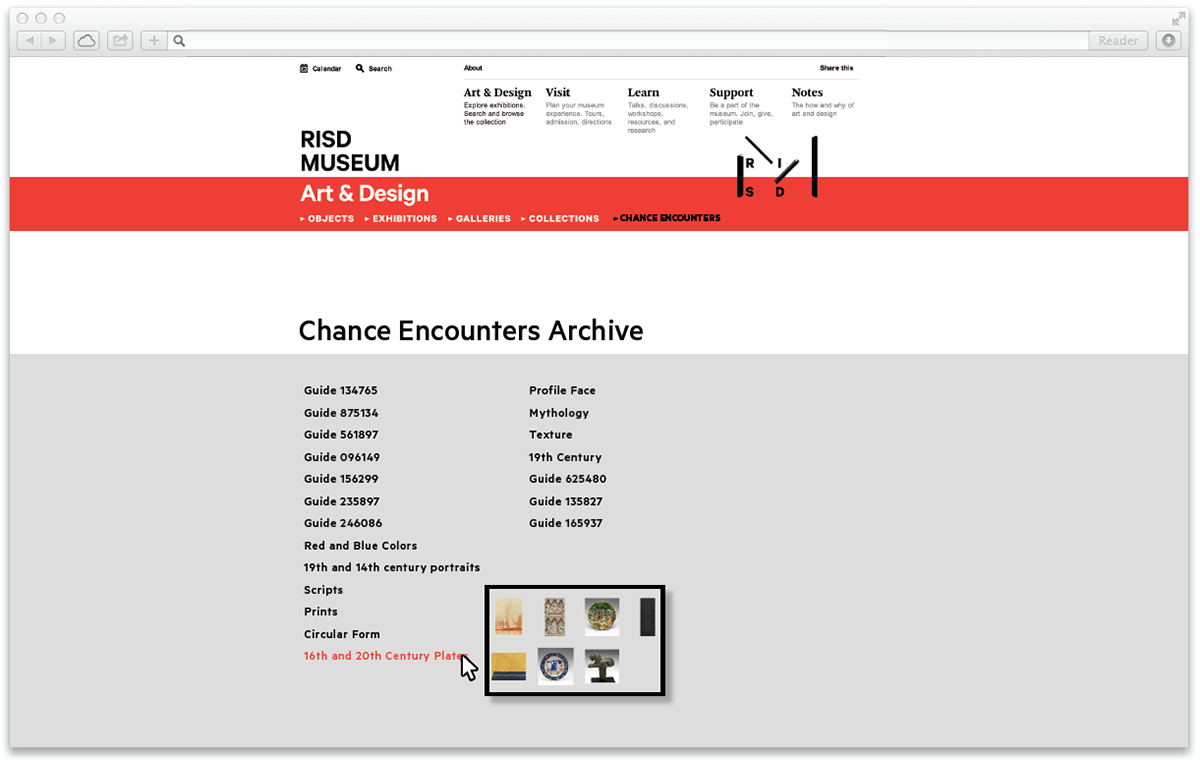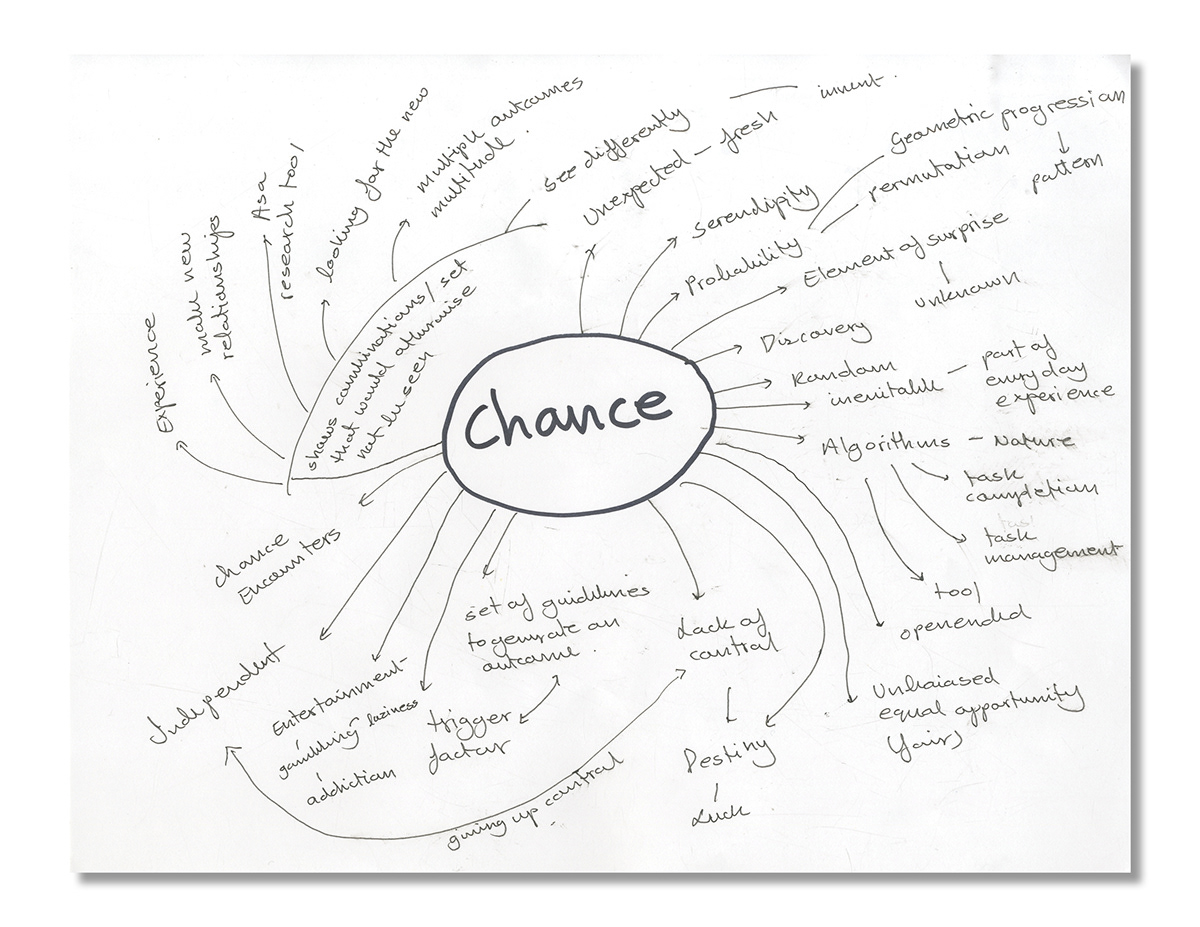The Chance Encounter Project was created as a response to an assignment
for my Visual Systems class which required using the concept of chance.
This project was created in a team with Jenny Zhen.
for my Visual Systems class which required using the concept of chance.
This project was created in a team with Jenny Zhen.
The characteristics of chance that we found most interesting were as follows:
It is ubiquitous and occurs all the time in everyday life
It allows for the discovery of something new
Seeing things in a different way
Making new connections and relationships
Creates unique combinations of objects and circumstances
Element of surprise, unexpected
Lack of control to varying degrees
Automatic decision-making
We were interested in seeing how 'chance' could be applied to a museum setting in a more conscious way with the aim of encouraging visitors to discover, see new connections and have a platform to voice their observations and share their experience with others.
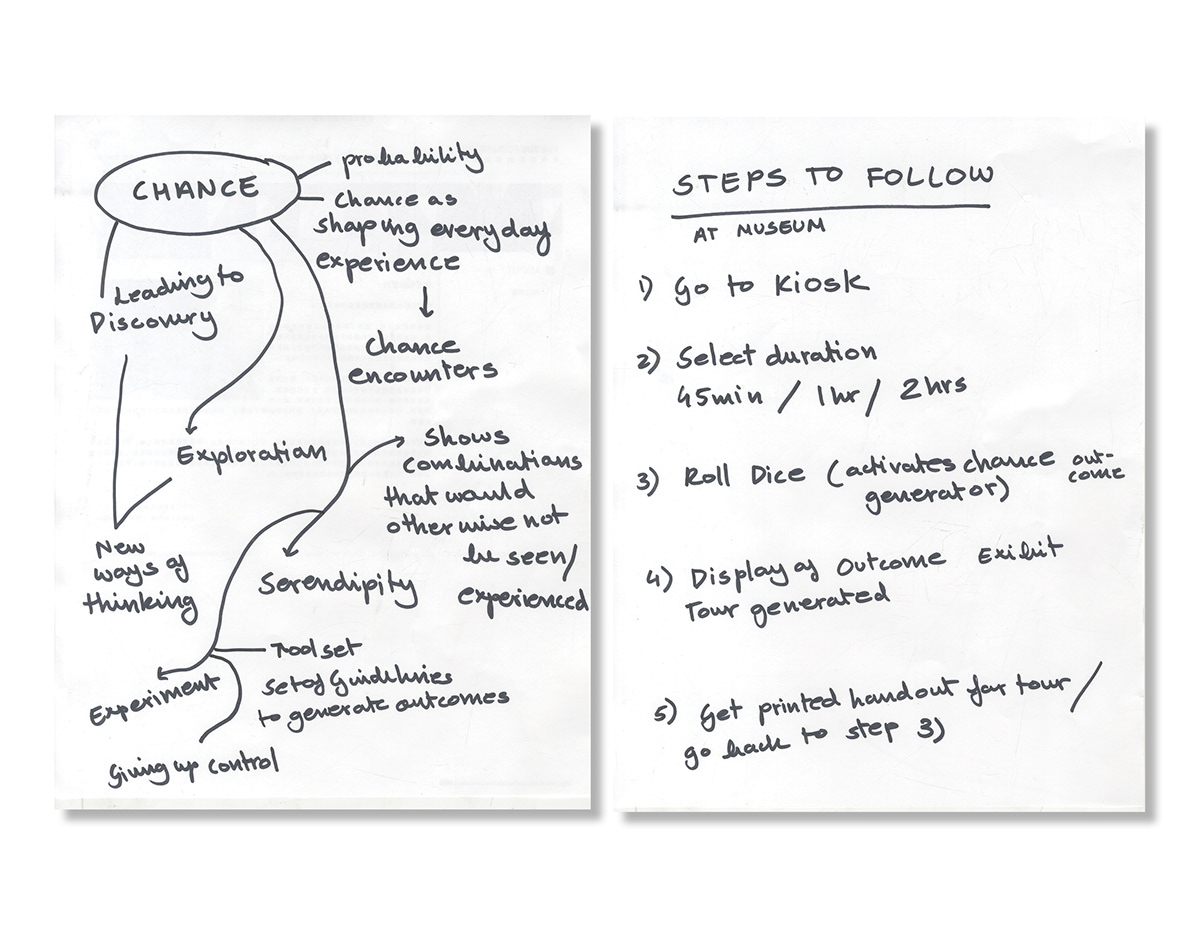
The Chance Encounter Experience would be available to museum visitors through
the musem's website and also via a kiosk setting in the musem depending on viability.
the musem's website and also via a kiosk setting in the musem depending on viability.
The Chance Encounter project would initiate the following interaction in a museum :
Pieces that are less likely to be seen would have a chance to be viewed.
Pieces that are less likely to be seen would have a chance to be viewed.
Visitors would be able to see relationships and create comparisons
between pieces that they may not have noticed on their own.
between pieces that they may not have noticed on their own.
This could further lead to more connections, discussion and debate.
Visitors may share this experience with others who may find new connections.
They would be able to use the limited time they may have to generate
their own unique curated tour.
Visitors may share this experience with others who may find new connections.
They would be able to use the limited time they may have to generate
their own unique curated tour.
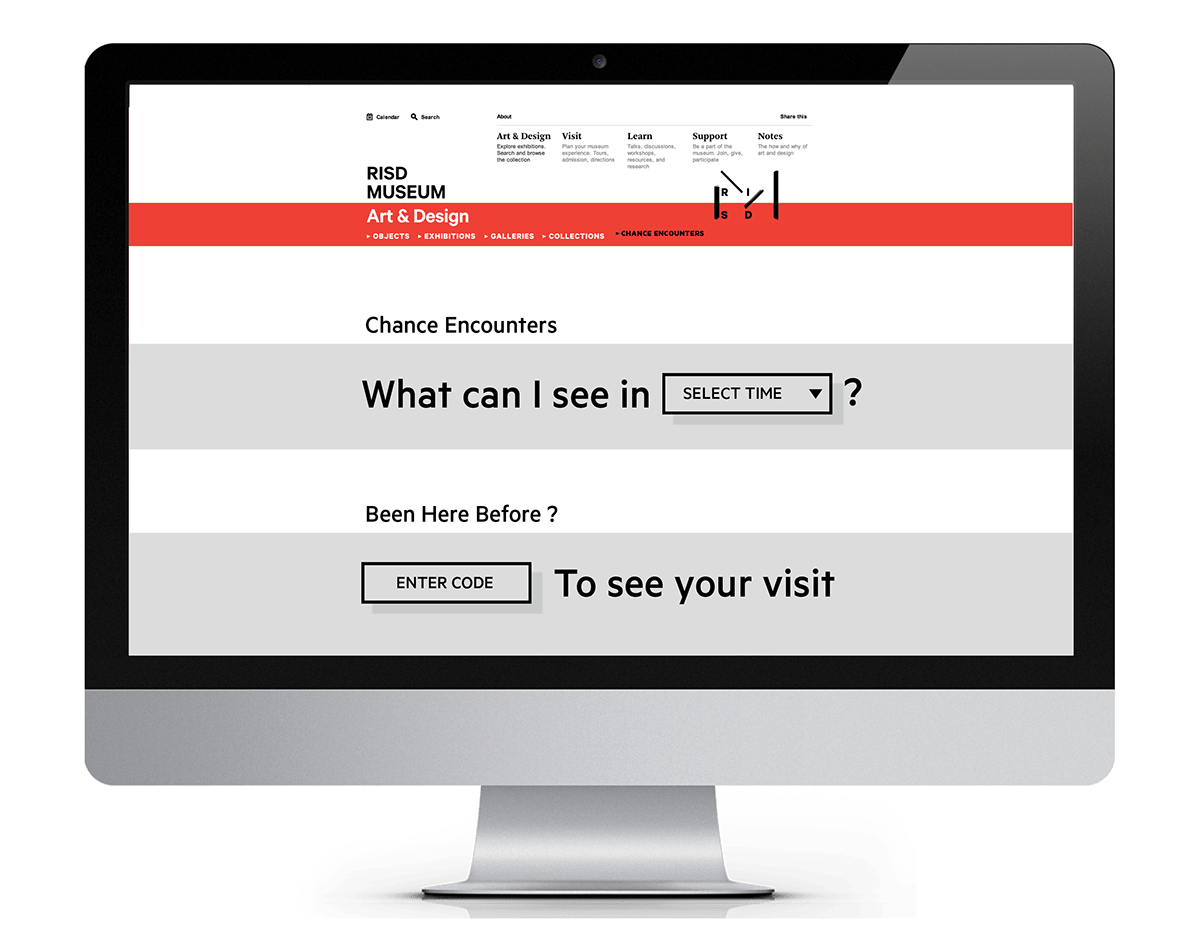
The Chance Encouneter Project was applied to the scenario of the RISD Museum.
It would function as a component within the museum's website.
It would utilize the image resources and information within the website.
It would use the existing database of images of the exhibits on view specifically in the
permanant collection and shuffle them to generate random image outcomes.
The number of image outcomes generated would be based on the time selected by the visitor.
It would utilize the image resources and information within the website.
It would use the existing database of images of the exhibits on view specifically in the
permanant collection and shuffle them to generate random image outcomes.
The number of image outcomes generated would be based on the time selected by the visitor.
This experience may also be used in the setting of other museums that have an online database of exhibit images and information that may be accessible. It can also be applied to other situations, for exaple to encourage exploration in a town or city.
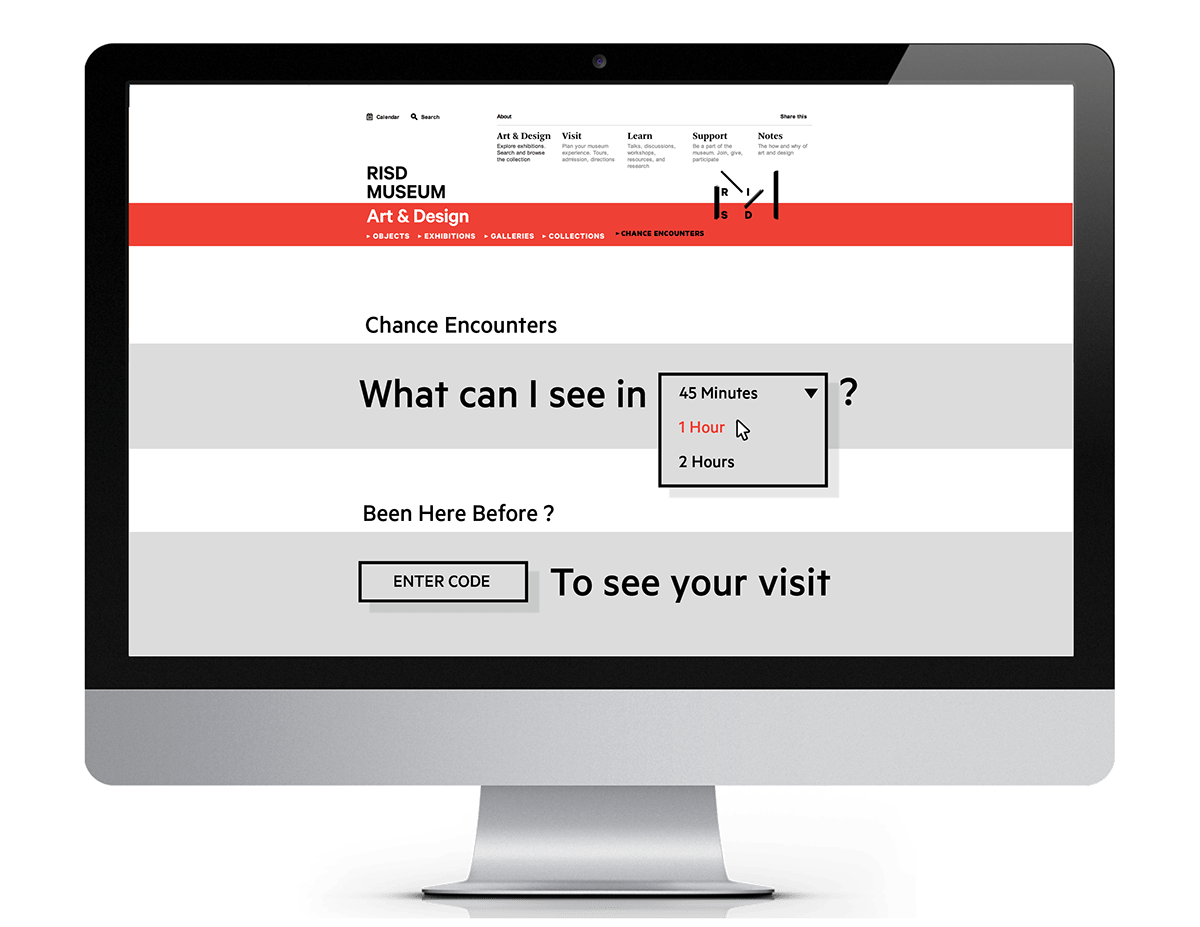
An example of how the images of the artworks will shuffle randomly before stopping
at a random combination of artworks proposed for the chance encounter.
at a random combination of artworks proposed for the chance encounter.
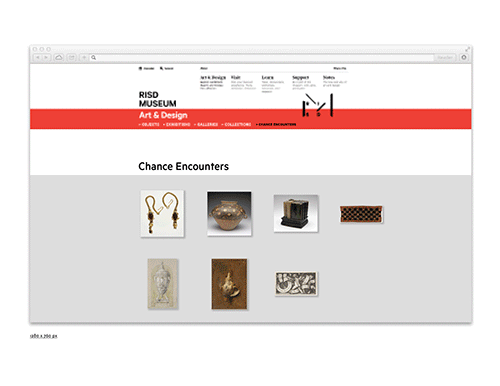
If the user would like to create another combination they can press the 'try again button'
or print a guide of the combination of artworks that was created
or print a guide of the combination of artworks that was created
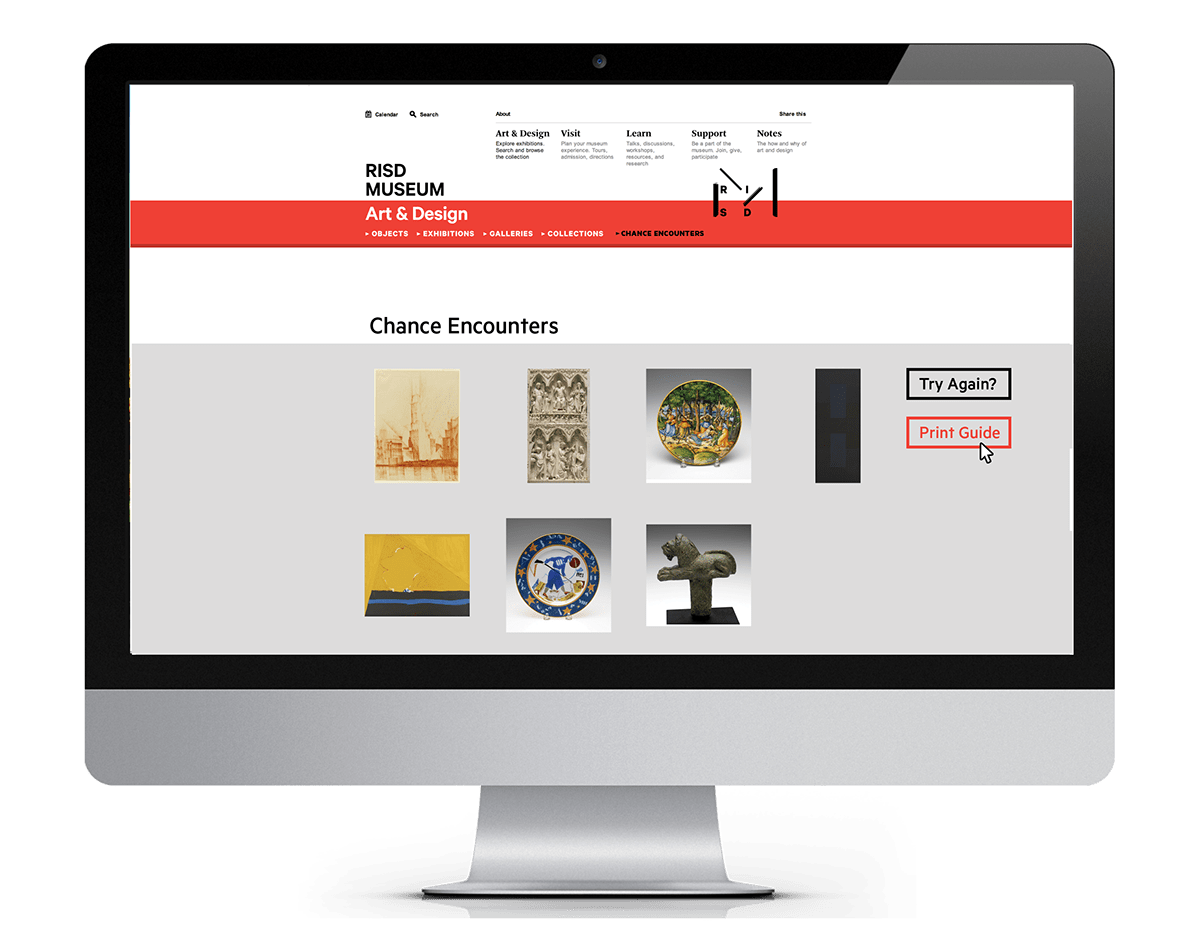
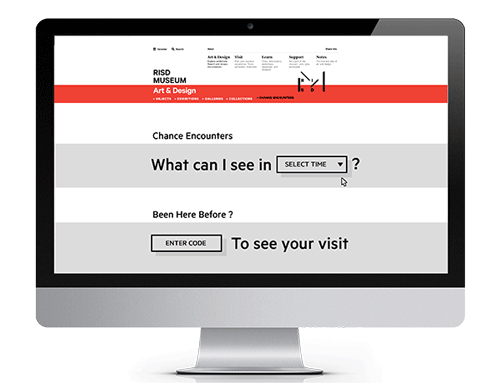
The printed Chance Encounter Guide will contain images and
information about the randomly selected artworks.
It will also have lines connecting artworks that may have features in common
such as media, artist,time period, region. These connections will be based
on the tags that are already present in the musem's system for the art pieces.
such as media, artist,time period, region. These connections will be based
on the tags that are already present in the musem's system for the art pieces.
Seeing these connections will encourage visitors to analyse and create their own
relationships between the art peieces, They may also choose to curate their own tour
based on these realtionships that they discover by chance.
relationships between the art peieces, They may also choose to curate their own tour
based on these realtionships that they discover by chance.
Each Chance Encounter Guide which is printed will have its own unique code.
The visitor can further use this to view his/her chance encounter guide on the musem's
website and innitiate further interaction, discovery and debate.
The visitor can further use this to view his/her chance encounter guide on the musem's
website and innitiate further interaction, discovery and debate.
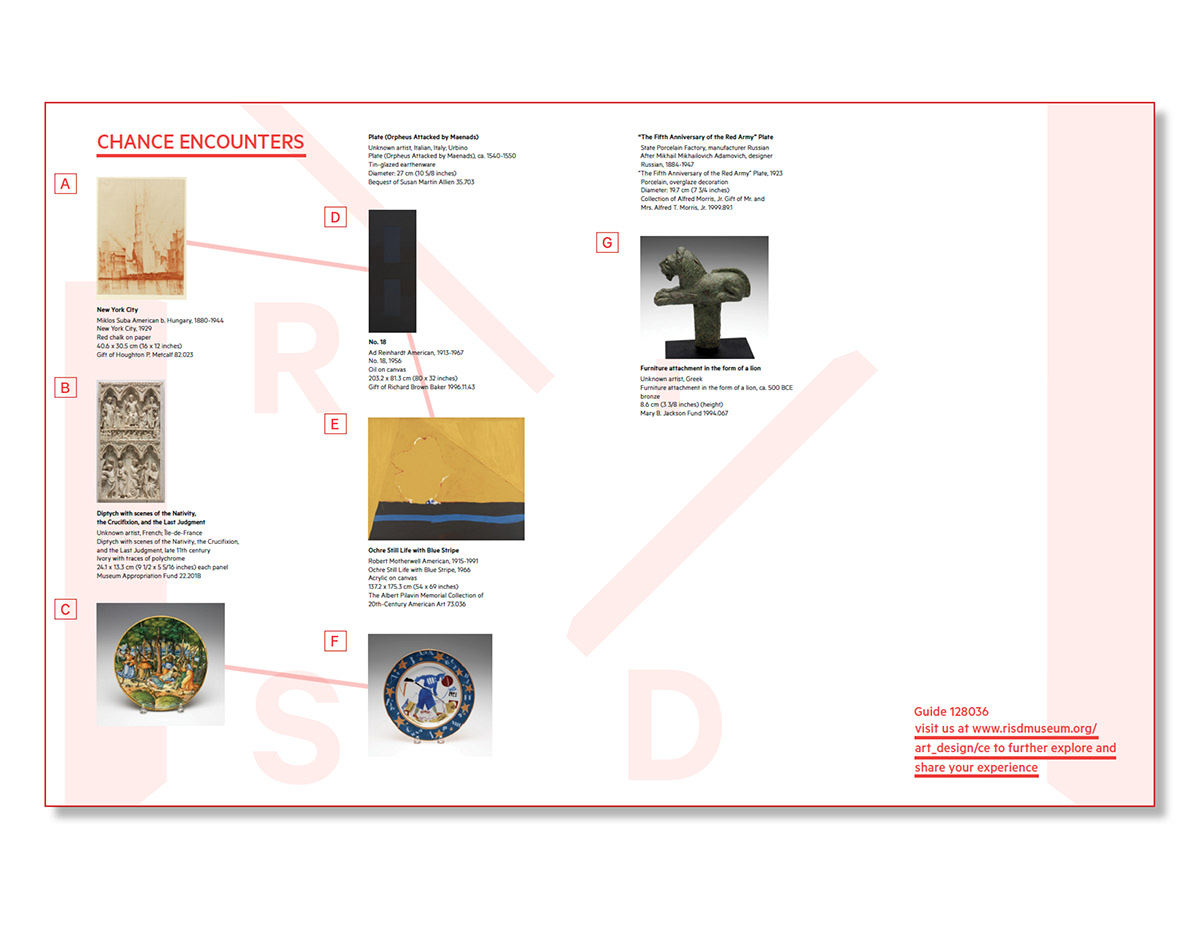
The back of the printed Chance Encounter Guide will have a map
of the Museum revealing the rough location of each piece.
of the Museum revealing the rough location of each piece.
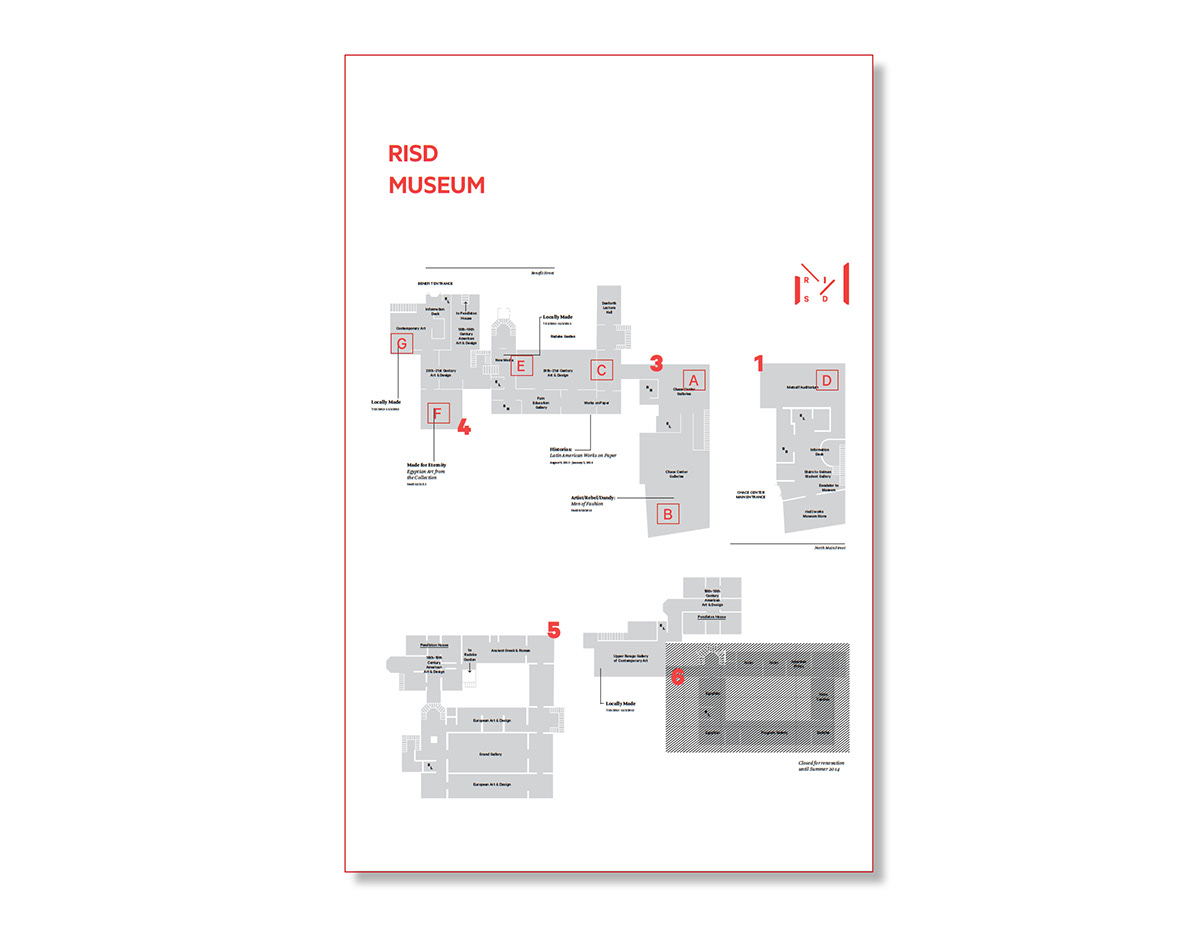
Visitors and users will be able to access their Chance Encounter Guides on the
musem's website by putting in the code number of their guide. Thus they would
be able to undertake another series of exploration and interaction as follows :
musem's website by putting in the code number of their guide. Thus they would
be able to undertake another series of exploration and interaction as follows :
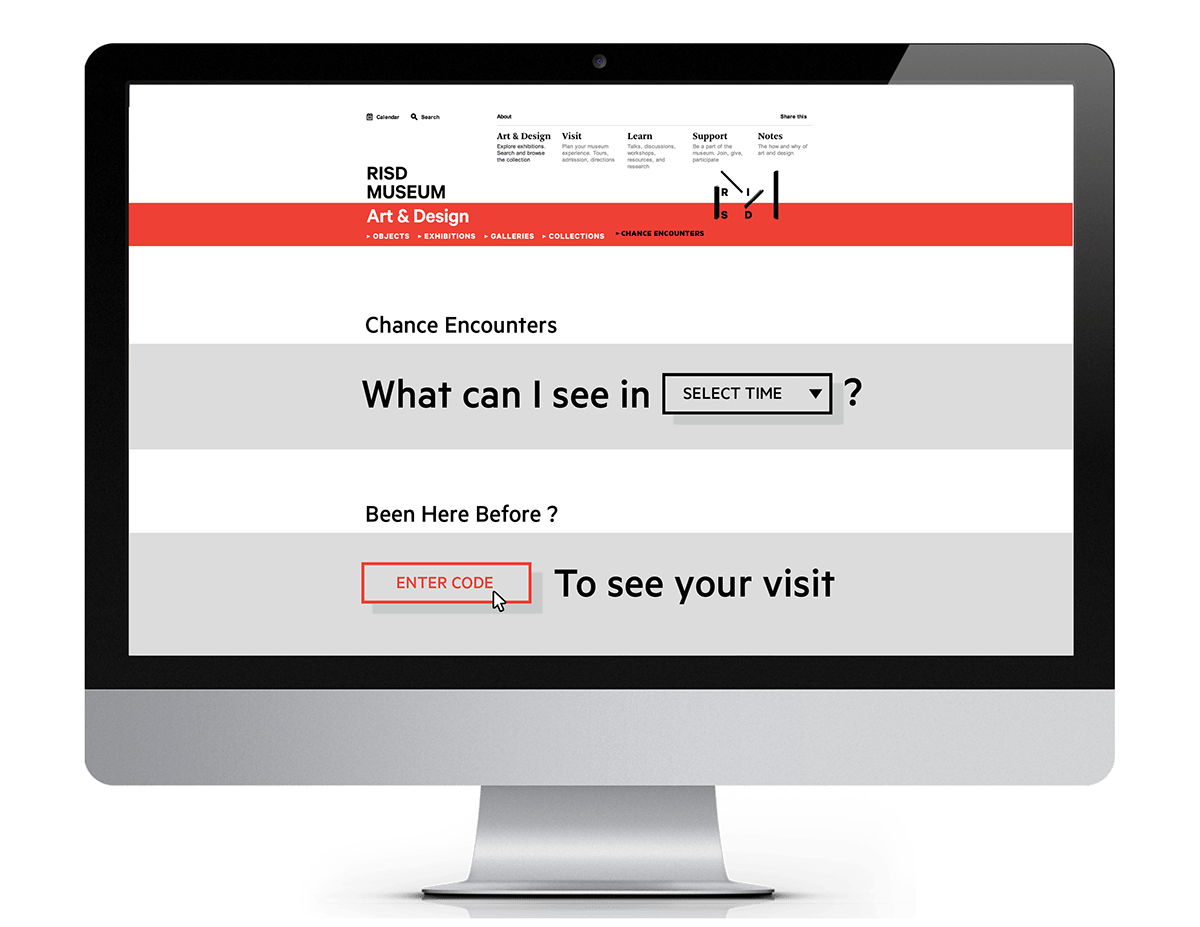

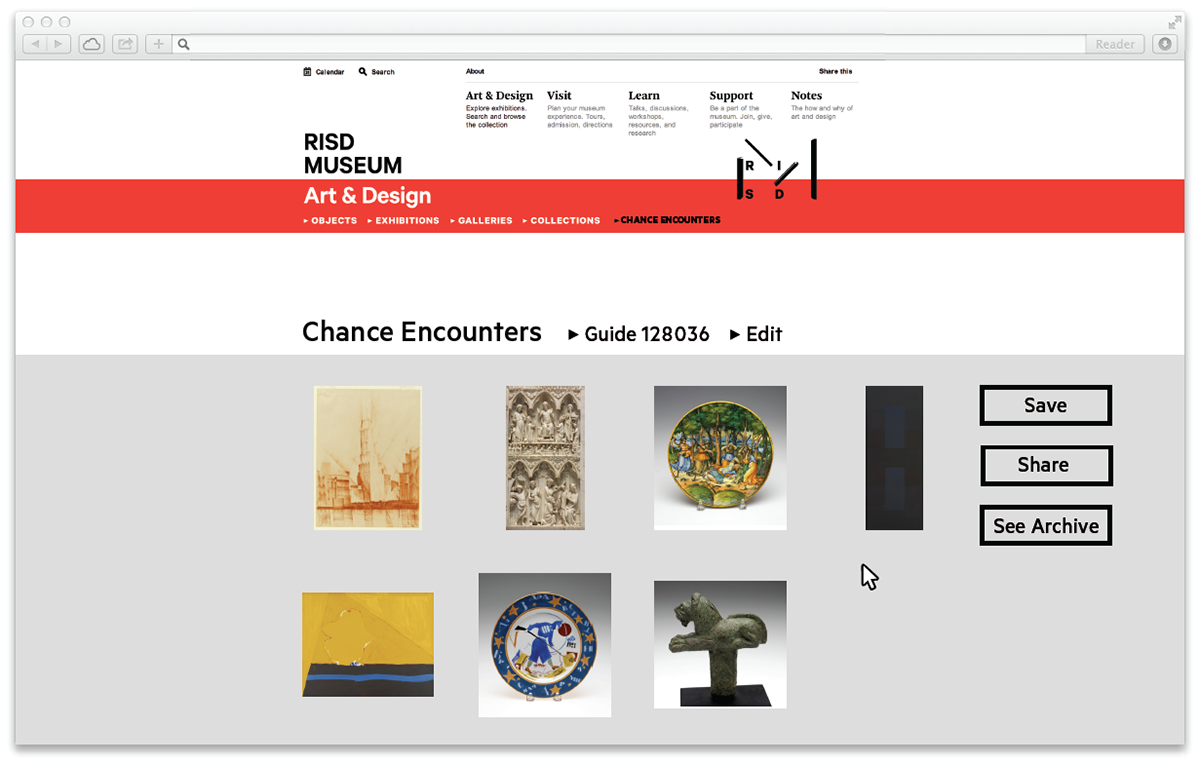
Enlarge images
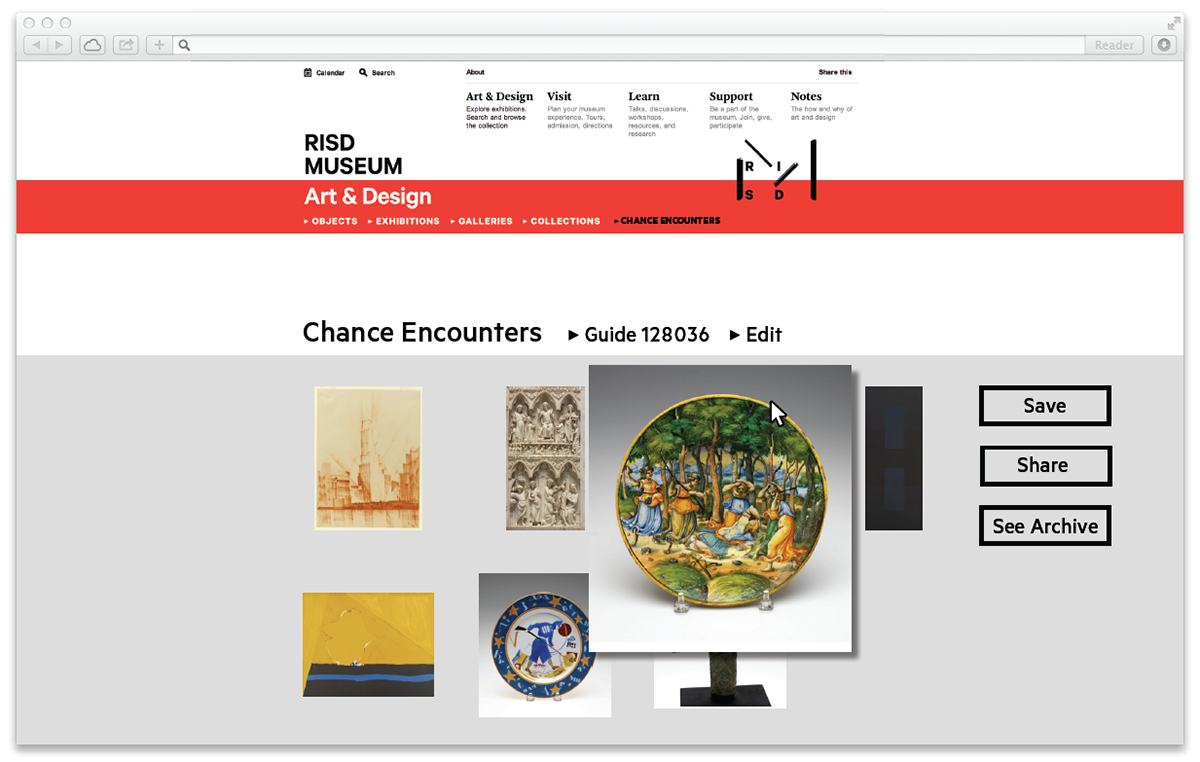
Move images and compare

Veiw information about the art piece upon hovering.
Click to go to the page containing more information about the
art piece within the RISD Museum website.
Click to go to the page containing more information about the
art piece within the RISD Museum website.
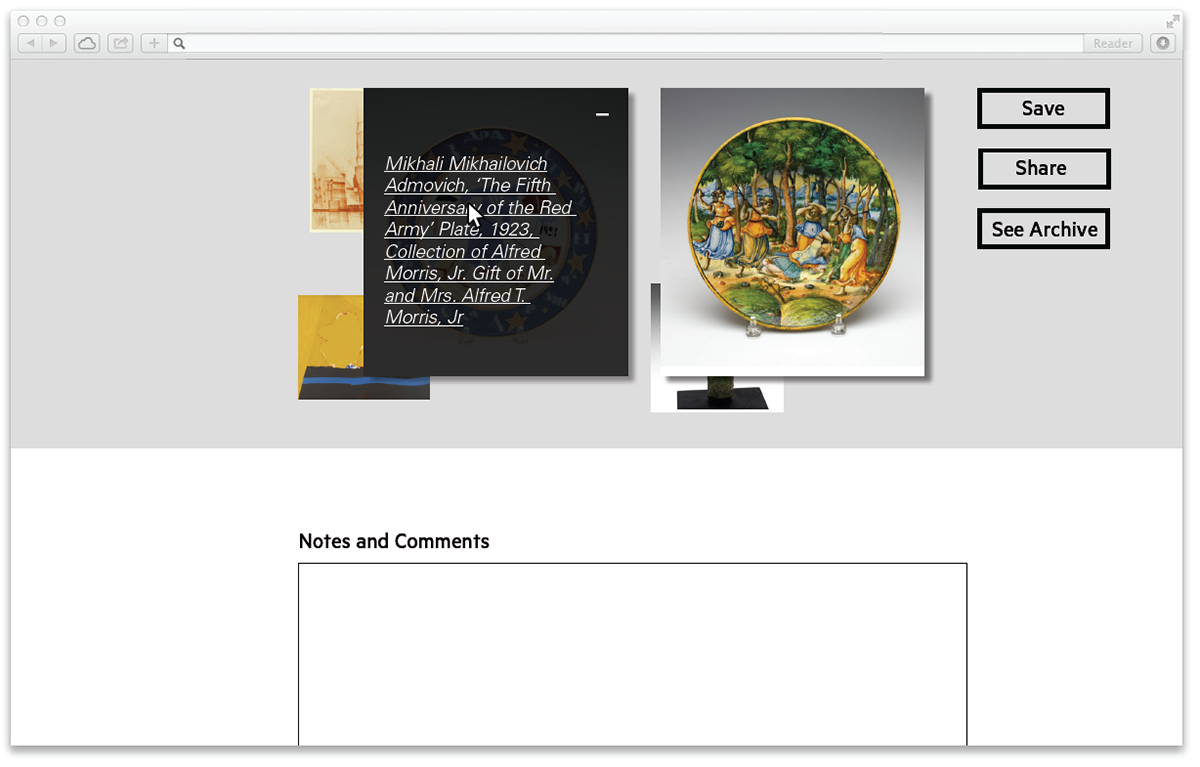
Write notes and comment on your observations about the art pieces. You may identify similaraties and differences. You are encouraged to express your opinion.
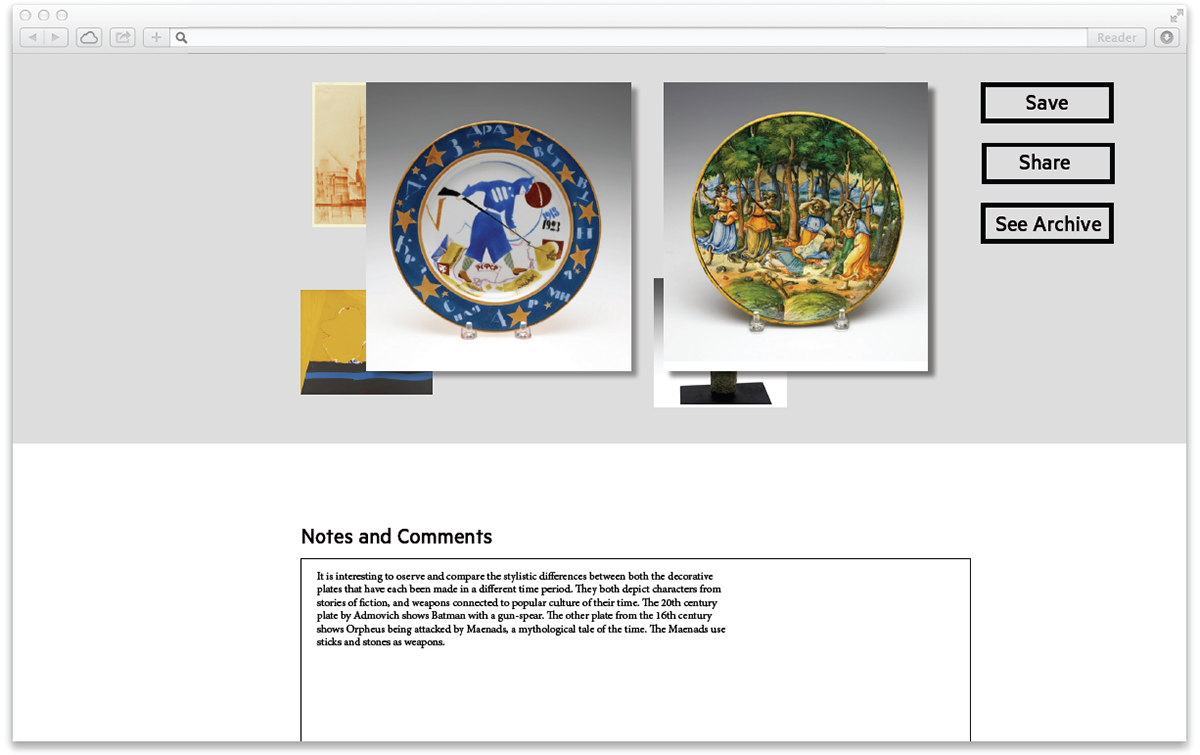
Rename your Chance Encounter Guide based on the observation
you have made or the debate you want to create.
you have made or the debate you want to create.

Share your Chance Encounter Guide with others to initiate further debates and observations.
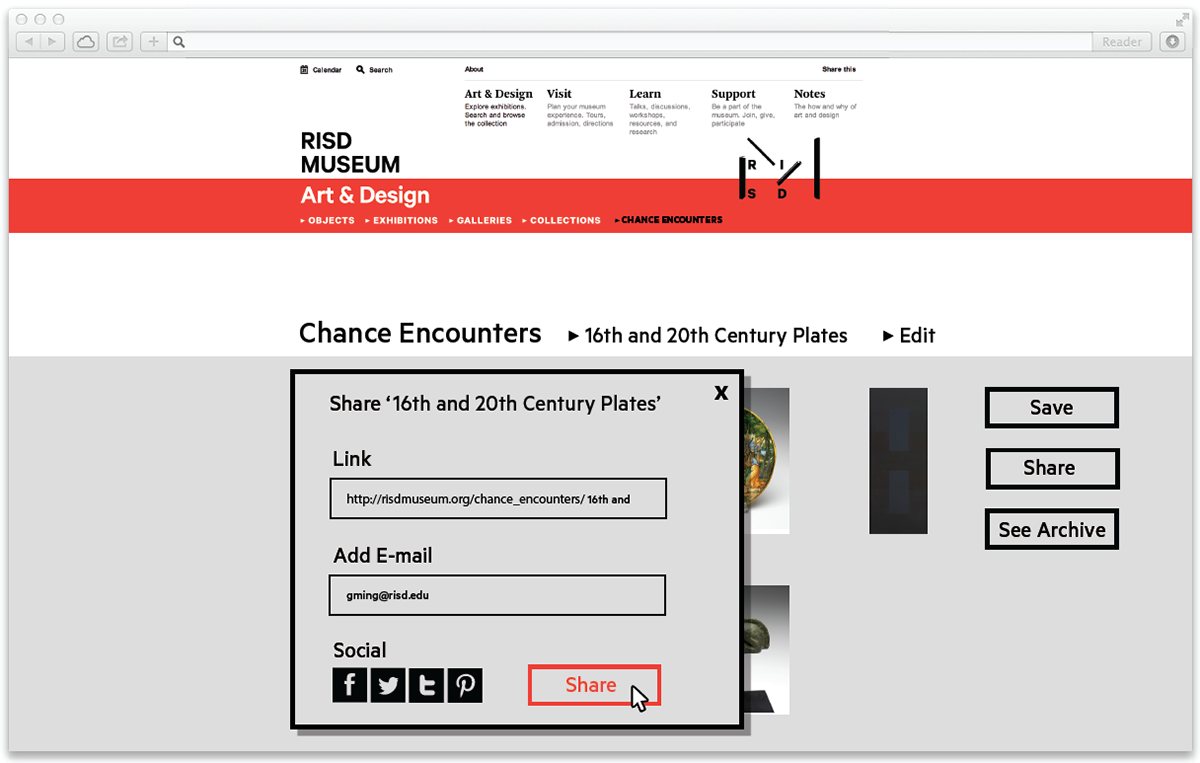
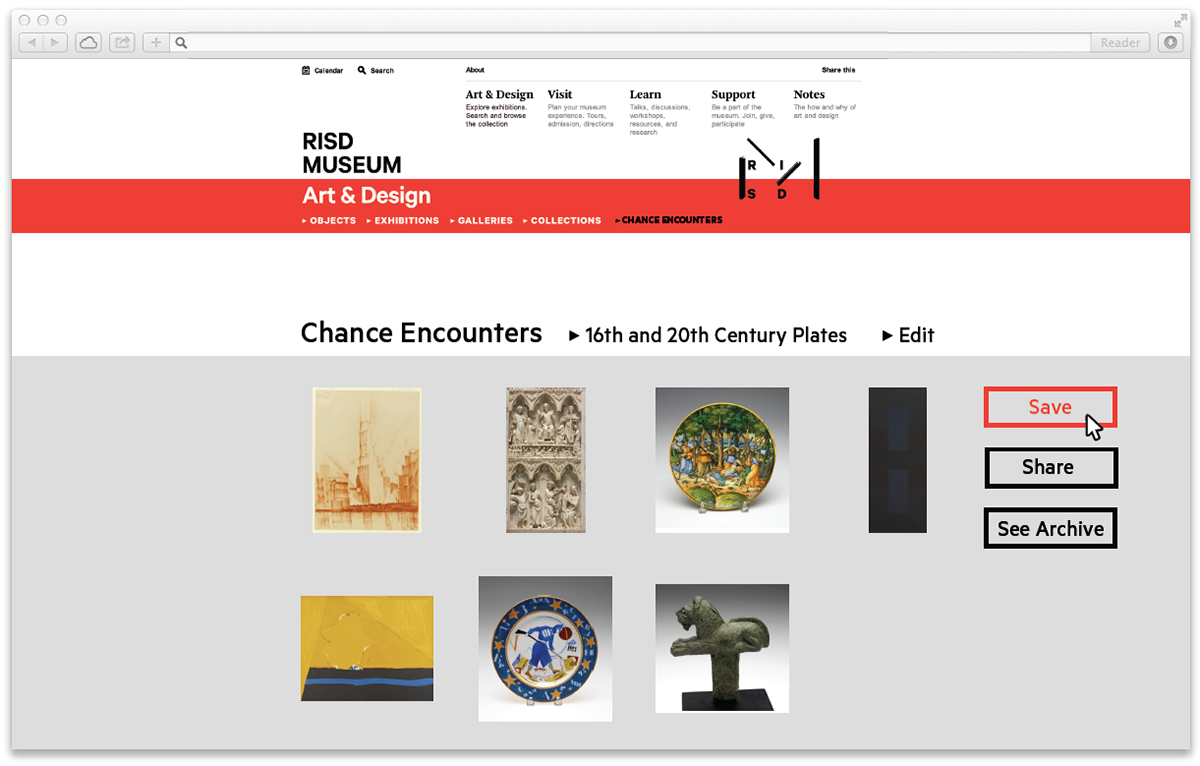
All printed and saved Chance Encounter Guides can be found
and viewed from the Chance Encounter Archive.
and viewed from the Chance Encounter Archive.
